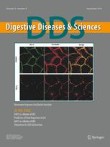
Medicine RSS-Feeds by Alexandros G. Sfakianakis,Anapafseos 5 Agios Nikolaos 72100 Crete Greece,00302841026182,00306932607174,alsfakia@gmail.com
Πληροφορίες
Τετάρτη 15 Ιανουαρίου 2020
Pyoderma Gangrenosum in Inflammatory Bowel Disease: A Systematic Review and Meta-Analysis
Pyoderma Gangrenosum in Inflammatory Bowel Disease: A Systematic Review and Meta-Analysis:


Αναρτήθηκε από
Medicine by Alexandros G. Sfakianakis,Anapafseos 5 Agios Nikolaos 72100 Crete Greece,00302841026182,00306932607174,alsfakia@gmail.com,
στις
11:01 μ.μ.

Ετικέτες
00302841026182,
00306932607174,
alsfakia@gmail.com,
Anapafseos 5 Agios Nikolaos 72100 Crete Greece,
Medicine by Alexandros G. Sfakianakis,
Telephone consultation 11855 int 1193
Εγγραφή σε:
Σχόλια ανάρτησης (Atom)
Αρχειοθήκη ιστολογίου
-
►
2023
(366)
- ► Φεβρουαρίου (184)
- ► Ιανουαρίου (182)
-
►
2022
(2814)
- ► Δεκεμβρίου (182)
- ► Σεπτεμβρίου (213)
- ► Φεβρουαρίου (264)
- ► Ιανουαρίου (262)
-
►
2021
(3815)
- ► Δεκεμβρίου (229)
- ► Σεπτεμβρίου (276)
- ► Φεβρουαρίου (64)
-
▼
2020
(5754)
- ► Δεκεμβρίου (401)
- ► Σεπτεμβρίου (365)
- ► Φεβρουαρίου (754)
-
▼
Ιανουαρίου
(894)
-
▼
Ιαν 15
(86)
- Journal of Maxillofacial and Oral Surgery
- Medicine by Alexandros G. Sfakianakis,Anapafseos 5...
- 35 JOURNALS
- MDPI
- MDPI
- Frequency and distribution of polyQ disease interm...
- Extraluminal Duodenal Gangliocytic Paraganglioma P...
- Surgical Resection of Multiple Small Bowel Neuroen...
- Pyoderma Gangrenosum in Inflammatory Bowel Disease...
- Mutational Mosaics of Cell-Free DNA from Pancreati...
- Polyp Detection Rate Correlates Strongly with Aden...
- iASPP-Mediated ROS Inhibition Drives 5-Fu Resistan...
- Early Treatment Uptake and Cost Burden of Hepatiti...
- IntraMed
- Lichen planus related to transforming growth facto...
- CD10 and P63 Expression in a Sarcomatoid Undiffere...
- Cutaneous “Fibroma‐Like” Perivascular Epithelioid ...
- Experimental+Biology+and+Medicine
- Adhesive Hydrogels for Maxillofacial Tissue Regene...
- Improving Quantum Yield of a NIR‐II Dye by Phenyla...
- Synthetic Polymers Provide a Robust Substrate for ...
- Bioinspired Biomaterials with a Brick‐and‐Mortar M...
- Control of Astrocyte Quiescence and Activation in ...
- Design and Analysis of Elimination Surveys for Neg...
- Progesterone Receptor Gene Variants in Metastatic ...
- Europe PMC
- Novel technique of fixing intracorneal rings segme...
- Volatile anaesthetic for treatment of respiratory ...
- Cyclophosphamide, bortezomib and dexamethasone (Cy...
- Successful liver transplantation for drug-induced ...
- Rare case of bilateral wrist and foot drop from SL...
- Rupture of mitral valve papillary muscle: a rare c...
- Terlipressin-induced ischaemic skin necrosis
- Lung Cancer
- The effect of eHealth-based falls prevention progr...
- Improving the quality of life of patients with bre...
- Impact of transforming mental health services for ...
- Point-of-care blood tests during home visits by ou...
- Enhanced recovery following hip and knee arthropla...
- Cost-effectiveness of total knee replacement in ad...
- Oral propranolol for treatment of the subgroups of...
- Womens leadership in academic medicine: a systemat...
- MedWorm Allergy & Immunology Research
- Climatic Change
- IL-9 blockade attenuates inflammation in a murine ...
- Etiology and Outcome of Candidemia in Neonates and...
- New GEO Series
- Environmental+Science+and+Pollution
- GEO series published today
- Trace elements, polycyclic aromatic hydrocarbons, ...
- Insulin resistance is an independent risk factor f...
- Subthalamic nucleus deep brain stimulation in two ...
- Frequency and distribution of polyQ disease interm...
- Novel mutations in SPEF2 causing different defects...
- Foxn1 and Prkdc genes are important for testis fun...
- A20-OVA Nanoparticles Inhibit Allergic Asthma in a...
- MicroRNA-486-5p Promotes Acute Lung Injury via Ind...
- PNU-282987 Attenuates Intestinal Epithelial Barrie...
- Ossiculoplasty for Tympanosclerosis
- Targeted Biologic Therapies in Allergic Disease
- Elevated omentin-1 levels, their clinicopathologic...
- Recurrent Multifocal Cellulitis
- Cell adhesion in cancer: Beyond the migration of s...
- Estrogen-induced FOS like 1 regulates matrix metal...
- The basis for non-canonical ROK family function in...
- ALS-derived fibroblasts exhibit reduced proliferat...
- Brain MRI of multiple system atrophy of cerebellar...
- A pooled meta-analysis of GPi and STN deep brain s...
- Assessing heavy metal pollution by biomonitoring h...
- Acute ecotoxicity and genotoxicity assessment of t...
- Environmentally relevant exposures of male mice to...
- “Modern agriculture” transfers many pesticides to ...
- Plastic floating debris along a summer-winter estu...
- Phosphorus removal from wastewater by waste concre...
- Exposed to endocrine active riverbed sediments
- Influence of graphene oxide nanosheets on the cotr...
- Trace elements, polycyclic aromatic hydrocarbons, ...
- Distribution and risk analysis of heavy metals in ...
- Protocol for intubation with introducer guide
- Videolaryngoscopes
- Supraglottic Airway Devices (SADs)
- Wilson risk score
- Airway Assessment
- Ear, Nose & Throat Journal
- Voice
- Medicine by Alexandros G. Sfakianakis,Anapafseos 5...
-
▼
Ιαν 15
(86)
-
►
2019
(146)
- ► Δεκεμβρίου (19)
- ► Σεπτεμβρίου (54)

Δεν υπάρχουν σχόλια:
Δημοσίευση σχολίου